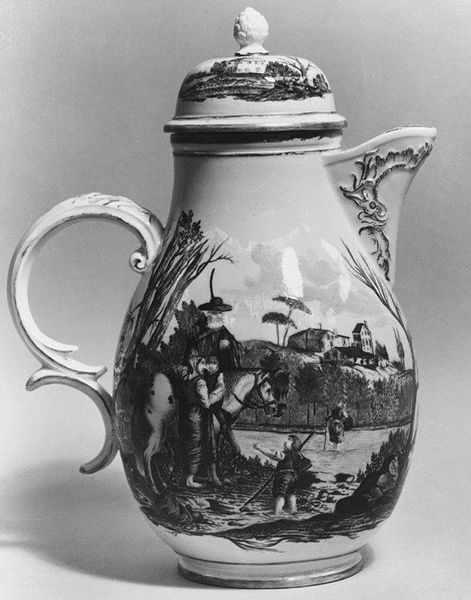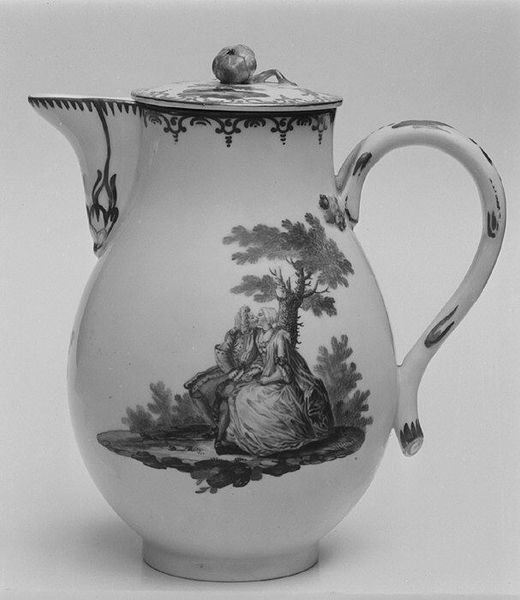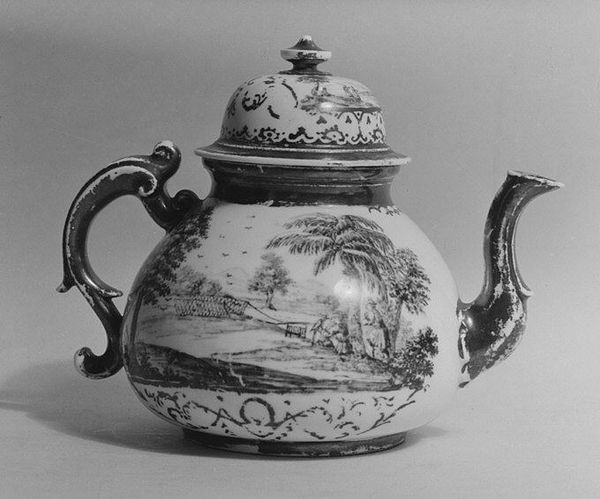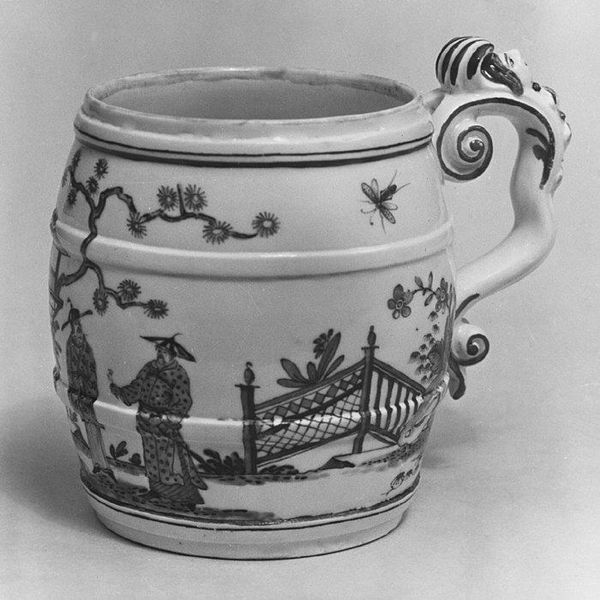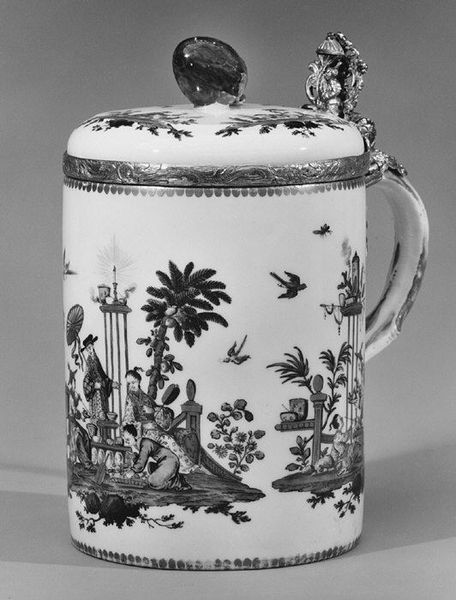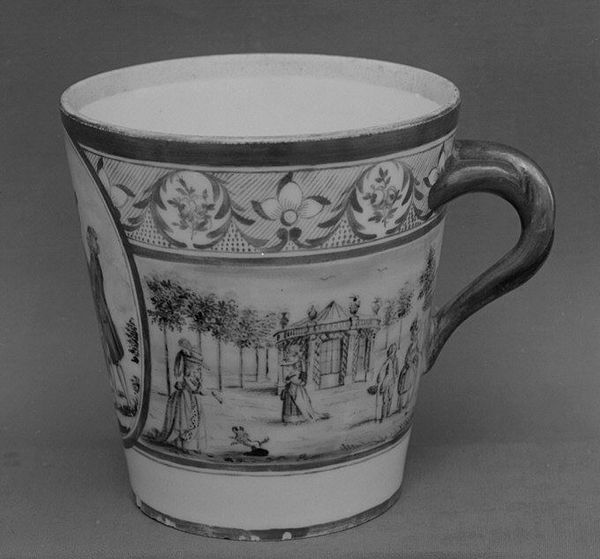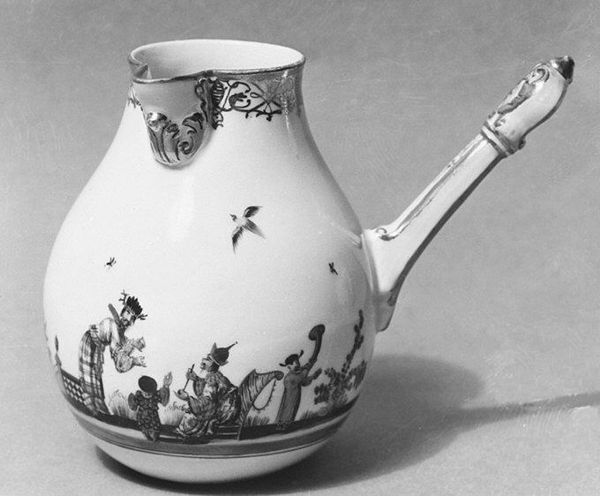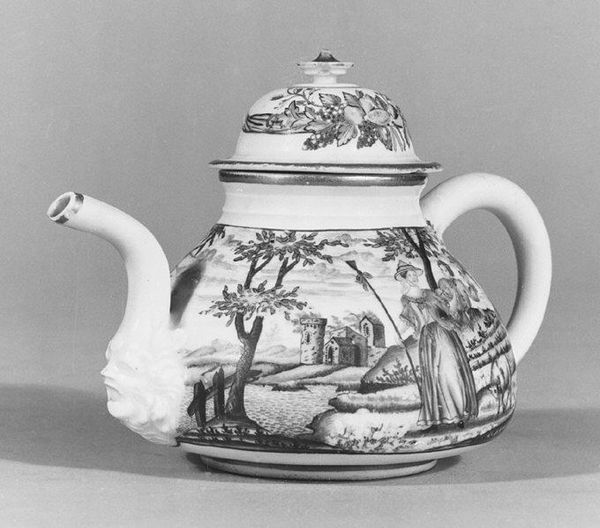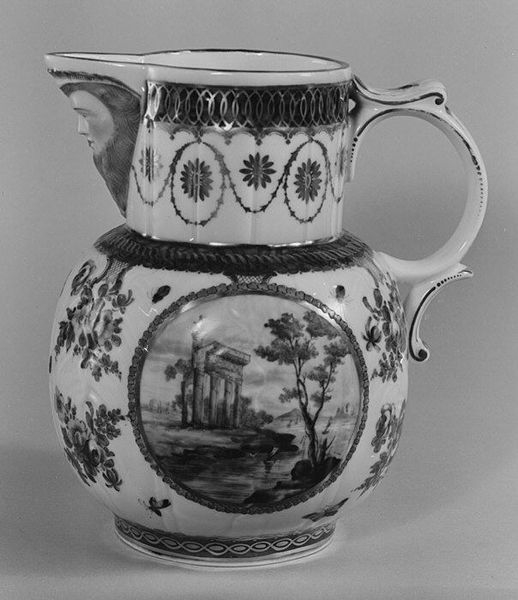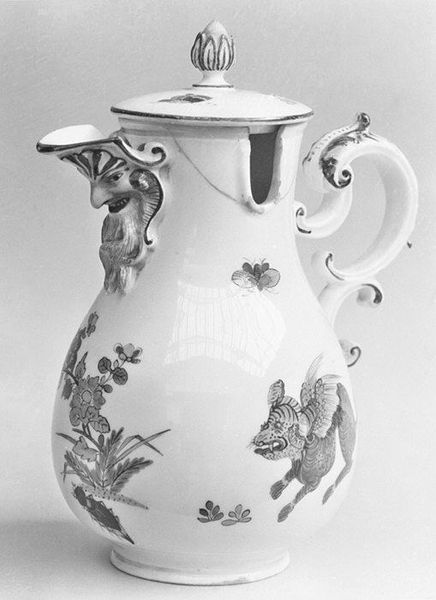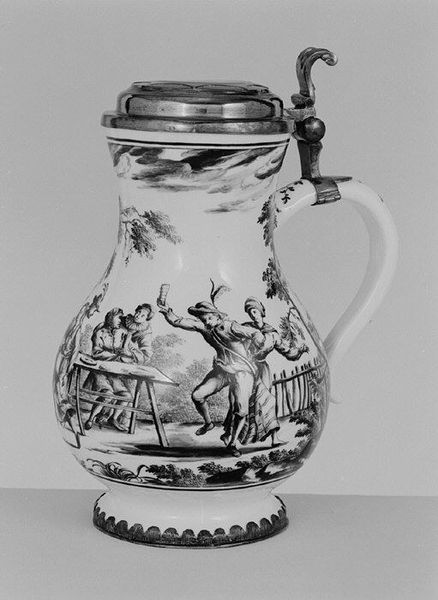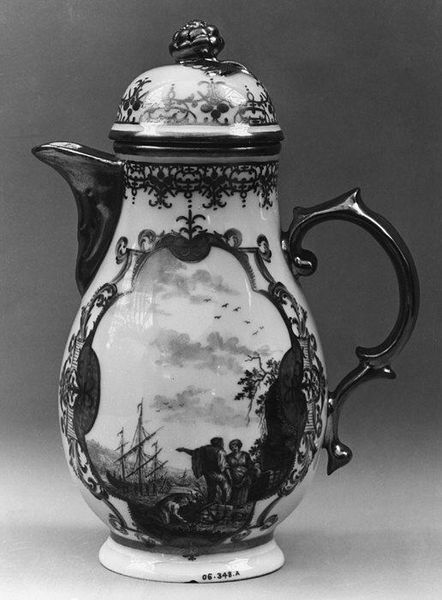
Dimensions: Height: 8 in. (20.3 cm)
Copyright: Public Domain
Curator: Here we have a porcelain tankard crafted around 1778 by the Nymphenburg Porcelain Manufactory. You'll find it on display here at the Metropolitan Museum of Art. Editor: My first impression is how delicate the artwork looks, despite it being functional. The monochrome scenes stand out crisply against the white porcelain. Curator: Indeed. Let's delve into its decorative scheme. The landscape motifs, combined with Rococo elements, signal a fascination with the pastoral but are clearly romanticized. The figuration is key to unlocking some of the complex dialogues of the time. Editor: You're right, those figures! What are they meant to depict? And are they printed transfers or freehand painted? Look closely. Either way, they illustrate a scene that must speak to period-specific narratives. It looks hand-painted to me and each of the figures seems very unique with specific gestures that are very well designed and executed. Curator: They appear to represent indigenous people, viewed through the lens of European exoticism, likely inspired by travel accounts or philosophical interpretations of the "noble savage" concept. So the question remains, How are the images related to colonialism, and in what ways does this ceramic object partake in forming and negotiating perceptions? Editor: That puts an uncomfortable spin on appreciating its elegance, but it’s important. From my side, seeing the material evidence of firing, painting, and manufacture reminds me this object wasn't merely decorative. Who was using it, in what social circles? What purpose did it serve besides holding a beverage? Was it used for ceremonies? Curator: I agree, by questioning the manufacturing and then applying class and critical theory we create an environment where it can be looked at by the elite for colonial power dynamics that occurred at the time of production. I appreciate how understanding its mode of production lets us challenge high art and consider cultural studies as well. Editor: This tankard certainly provides food for thought. Curator: Absolutely. Its story far exceeds the boundaries of decorative art; it provides an avenue to examine societal frameworks.
Comments
No comments
Be the first to comment and join the conversation on the ultimate creative platform.
